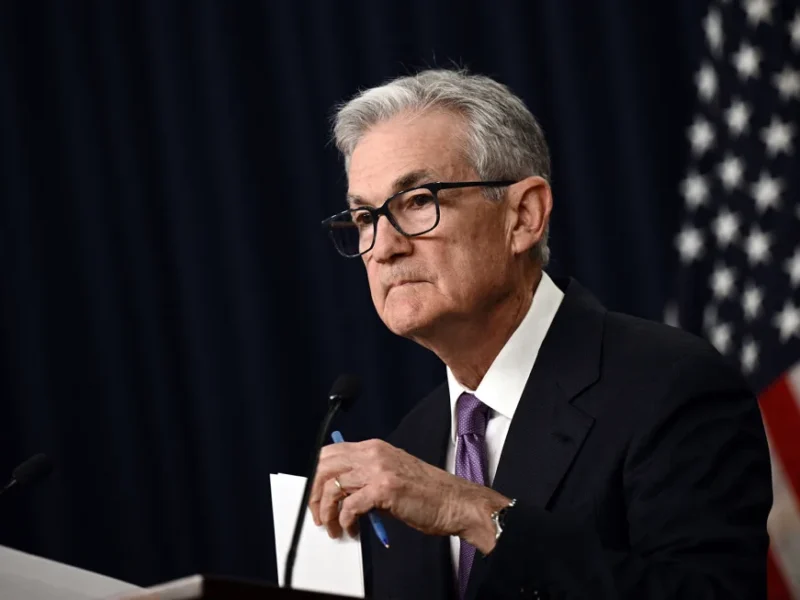A series of economic updates in the coming week will offer greater clarity on whether the Federal Reserve intends to lower interest rates in March.
The week will begin with the release of the December Job Openings and Labor Turnover Survey, which provides insights into the labor market’s demand and supply imbalances. This report includes the ratio of job openings to the number of job seekers and is closely watched by Fed Chair Jerome Powell.
Following that, the Labor Department will release the Employment Cost Index for the fourth quarter, offering a comprehensive measure of labor costs for employers. This index is essential in assessing wage trends, which influence the Fed’s stance on inflation.
The most crucial event of the week is the two-day Federal Reserve policy meeting, starting on Tuesday. Market expectations regarding a potential rate cut in March will largely depend on the guidance provided during this meeting.
The January jobs report, scheduled for release at the end of the week, will further assess the health of the US job market. The report will examine monthly payroll growth, unemployment rates, and average hourly earnings.
Additionally, productivity data for the fourth quarter will be scrutinized to determine if it aligns with wage growth. High productivity relative to wage gains can help control inflationary pressures.
Recent economic data have shown robust GDP growth without significant inflation acceleration. This includes a 3.3% annualized GDP rate in the final months of 2023 and steady Personal Consumption Expenditures price index readings. Consumer spending in December also remained solid, indicating that Americans have not significantly curtailed their spending.
These economic updates will play a significant role in shaping expectations regarding future Fed policy decisions, particularly regarding potential interest rate cuts in March.
The latest inflation report brings a lot of positive news for Americans.
The most recent inflation report for the end of 2023 brings encouraging news for Americans and the Federal Reserve, suggesting that the period of sharp price increases may be drawing to a close.
Commerce Department data released indicates that while the Federal Reserve’s preferred price gauge remained at a 2.6% annual rate, a closely monitored measure of underlying inflation has reached its lowest level since March 2021.
In addition, American households closed out 2023 on a strong note, with increased incomes and wages compared to the previous year. Consumers continued to spend robustly, contributing to economic growth and dispelling recession concerns.
Joe Brusuelas, principal and chief economist at RSM US, noted the resilience of American households and expressed optimism about the economy’s future, given the proximity to price stability and the apparent conclusion of the inflation challenge.
The Personal Consumption Expenditures (PCE) price index, the Fed’s target rate for inflation, showed a 2.6% annual increase in December, representing a softer impact compared to the 5.4% gain observed a year earlier. While December’s inflation reading remains 0.6 percentage points below the central bank’s 2% goal, it suggests a positive trend.
Excluding energy and food, which are often more volatile, the core PCE price index rose by 2.9% annually, indicating a slower pace than the 3.2% rate seen in November. The core PCE gauge, which is now at its lowest point since March 2021, is frequently highlighted by Fed Chair Jerome Powell and policymakers as a better indicator of inflation’s trajectory compared to the headline index.
Coming up next
Upcoming events for the week include:
Monday: Earnings from Whirlpool.
Tuesday: Earnings from Microsoft, Alphabet, Starbucks, UBS, HCA Healthcare, Marathon, General Motors, Cleveland Cliffs, Mondelez International, and JetBlue Airways. The European Union’s statistics agency releases its first reading of fourth-quarter gross domestic product. S&P Global releases its S&P CoreLogic Case-Shiller 20-city home price index for November. The US Labor Department releases December data on job openings, quits, hires, and layoffs. The Conference Board releases its January consumer survey. China’s National Bureau of Statistics releases January surveys of manufacturers and service providers.
Wednesday: Earnings from Novo Nordisk, Mastercard, Novartis, Boeing, ADP, Nasdaq, and Nomura Holdings. The US Labor Department releases its Employment Cost Index for the fourth quarter. ADP releases its employment report for December. The Federal Reserve announces its latest interest-rate decision, followed by Fed Chair Jerome Powell’s post-meeting news conference.
Thursday: Earnings from Apple, Amazon.com, Meta Platforms, Shell, Honeywell, Deutsche Bank, Clorox, Quest Diagnostics, United States Steel, and Peloton. The European Union’s statistics agency releases January data on inflation. The Bank of England announces its latest interest-rate decision. The US Labor Department reports the number of new applications for jobless benefits in the week ended January 27, along with fourth-quarter data on nonfarm productivity and unit labor costs. S&P Global and the Institute for Supply Management release January surveys gauging economic activity in the US manufacturing sector.
Friday: Earnings from Exxon Mobil, AbbVie, Chevron, and Regeneron Pharmaceuticals. The US Labor Department reports on the state of the US job market, including monthly payroll gains, wage growth, and the unemployment rate. The University of Michigan releases its final reading of consumer sentiment in January.











